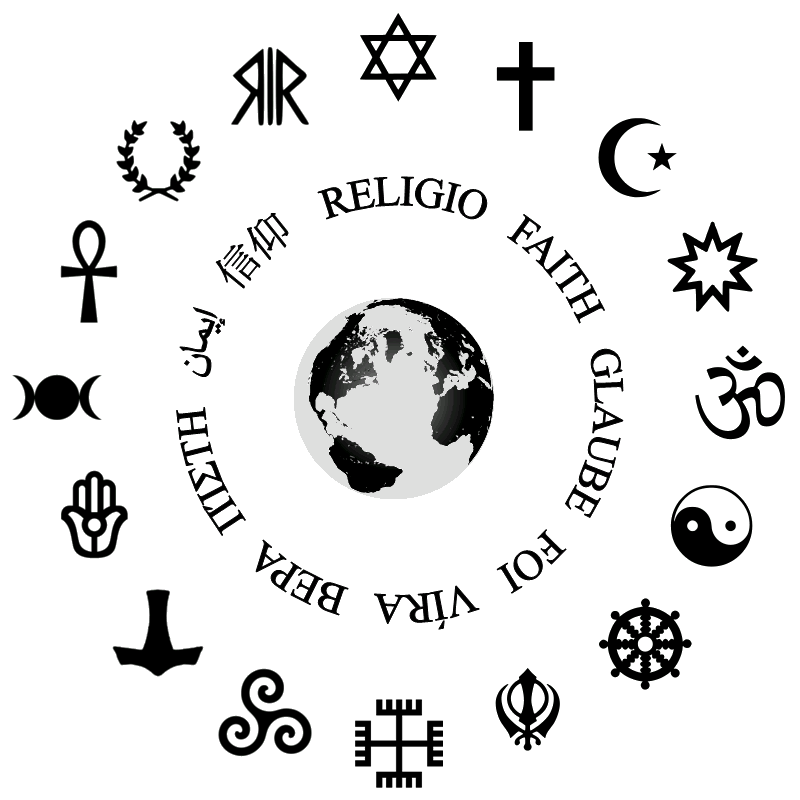Not all of the Craft’s central concepts can be traced to any known antecedents. Some, being sui generis, indicate specific ways in which the Craft is a unique religion, quite unlike anything else under the Sun—or the Moon. For example, consider the concept of reincarnation, which most modern Witches believe strongly in, perhaps largely because it provides an alternative to the “traditional” Christian concepts of Heaven and Hell.
The earliest writings of the Greeks—Homer, Hesiod, the pre-Socratic philosophers—assume what has been called a “tripartite anthropology”: that human beings consist of body, soul, and spirit. To be more precise, the Greek terms transliterate as soma, psyche, and pneuma, the recognizable roots of such modern words as psychosomatic and pneumatic. We have the word “psychology” because psyche meant something much more like “mind” or “personality.” The usual current concept of “soul” is a compound of “mind” plus “spirit,” of psyche-plus-pneuma. In the Greek view, when the body died, the psyche–plus-pneuma went to the underworld, to stand before the throne of Persephone, who sentenced the person to reward in the Elysian Fields or to punishment in Tartarus, before he or she was reborn. (Apparently the whole point of being initiated at Eleusis was that you were thus adopted as a child of Demeter; hence when you stood before Demeter’s daughter Persephone, she would judge you as a family member, not as a stranger—which made all the difference in Greek society.)
Notice that the ancient concept here, still embodied in popular language, is that a living body consists of body-plus-soul, and that death consists of the soul leaving the body. The soul is thought to “animate” the body, because the Latin anima, the Greek pneuma, and the Hebrew ruach all meant “breath.” That is why God breathes life into Adam in Genesis 2. Now we understand that life is a process, that a living body lives only because it continually changes according to a complex pattern; death occurs when the pattern of living is interrupted and the process of decay begins instead. (We need not feel so superior; Heraclitus understood all that quite well back about 550 B.C.E.) In other words, using the word “soul” to explain anything about life is equivalent to trying to use the four elements of Empedocles to do modern chemistry.
Plato, in the “myths” that conclude many of his dialogues, synthesizes the beliefs of the philosophers who preceded him. He proposes that the natural home of the psyche-plus-pneuma is the world of pure idea, beyond the realm of the gods, and that the psyche-plus-pneuma is sent down into the body in this imperfect world of decay and corruption as a punishment. He mentions an “Orphic” catchphrase: soma sema, “the body is a tomb.” Plato suggests that a person may be rewarded for virtue in this life by being born into a better position in society in the next life, but he suggests also that the true reward is to be freed from rebirth entirely, so as to be able to return to the world of pure idea, and that each person has only so many chances (perhaps nine rebirths) to achieve this freedom. A bad man would be punished by being reborn as a woman.
There is no positive evidence that Christians as such ever believed in reincarnation, but once Christians had adopted the Greek concept of the immortal soul, it also was not clear for some centuries whether they could believe in reincarnation or not. Finally, at the Council of Constantinople in 553 C.E., the theologians voted against reincarnation, largely because they could see no way that a person could be morally responsible for his or her own virtues and vices, and so for the reward or punishment they merited, if after dying and being judged he or she was reborn as another person and then baptized. It seemed much simpler to the theologians to believe that each soul was created fresh for each person and had only one lifetime on Earth.
Hence from the sixth century through the 18th century, belief in reincarnation appeared in Western societies only when it was reintroduced from the outside. This apparently happened with the Cathars, who had historical connections with earlier Manichaean or Gnostic groups in the Middle East. The concept of reincarnation reappeared in Western society only after Britain and other European nations had been colonial powers in India and in Buddhist countries for several centuries, during which generation after generation of European administrators had been exposed to Eastern beliefs.
Gardner asserts in Witchcraft Today that belief in reincarnation was preserved by the witch covens during the middle ages, and this has become part of the foundational myths of the Craft. In fact, belief in reincarnation was reintroduced into the Western world in the 19th century by Spiritualism and was then taken up by Theosophy.
The first wave of belief in reincarnation arose in response to the strange phenomena revealed by Mesmerism, developed by Anton Mesmer in the late eighteenth century. Mesmerism was at first popularly associated more with psychic phenomena than with therapeutic utility. Only when psi became the stock in trade of Spiritualistic mediums did Mesmerism become transformed into hypnosis as a form of medical therapy. The importing of Mesmerism to America was part of what set off the Spiritualist movement, and belief in reincarnation is compatible with Spiritualism, though not necessary for it (one can believe that the soul survives after death, as Christians do, without believing that it has been or will be reborn). There have been two camps within Spiritualism, one favoring reincarnation, the other opposing it, since the mid-19th century.
The Theosophical Society was founded in New York City in 1875 by Helena P. Blavatsky, who established “reincarnation” as the standard term for this concept, replacing “metempsychosis,” “transmigration,” “reimbodiment,” and other terms. It was also she who first linked the concepts of karma and reincarnation firmly in the Western mind. (The two concepts are not interdependent; it is possible to believe in one without the other.) The Theosophical content defined into these terms in the West does not correspond closely with what was believed about these topics in traditional Asian societies, and the concept of reincarnation in the Craft is much closer to that of Theosophy than to those of the ancient world or of Asian religions.
Nevertheless, as far as I’ve discovered, Witches do not believe what Theosophists, Buddhists, Hindus, the ancient Greeks, or almost anyone else has believed about reincarnation. In these latter systems, reincarnation is seen as the automatic result of a universal law, and as a punishment for ignorance; the goal of spiritual development is to stop the “wheel of rebirth,” to no longer be reincarnated. Witches, in contrast, believe that reincarnation is not automatic, that it is controlled by the gods and is the reward of the initiates. They believe “that you will be reborn among those you love, and that you will remember them and love them again”; the reward is for being on the side of the gods. Some Witches seem to operate from an assumption, usually not a very conscious one, that there probably are two kinds of souls, both mortal and immortal; that all souls begin as mortal, but can be transformed into immortal souls by certain kinds of initiatory experiences and spiritual growth (specifically, that provided by the training and initiations of the Craft); and that when the uninitiated die, their mortal souls simply cease to exist. That is, the theological concepts of and surrounding reincarnation in the Craft movement cannot be explained in terms of the concepts in the older occult traditions. Ironically, this Craft belief parallels the pre-Hellenistic theology of Judaism, which asserted that only God’s friends would be resurrected; the nonobservant would be merely forgotten, not punished.
As C.S. Lewis wrote, Heaven and Hell are not places, but spiritual conditions. The now standard scenario of Heaven being up, Hell down, with the consumers taking the escalator up or down after checking in at the front counter, comes straight out of one of Plato’s dialogs, that is, from pagan belief; Jewish belief was in physical resurrection. There is a passage in Justin Martyr (the first Christian author trained in Platonism, writing about A.D. 150), one that set me laughing, in which he complains that the original Christian teaching has been corrupted by a dreadful heresy: the belief in an immortal soul.
The Greeks were dualists; the Jews were not. The Greeks believed that the soul, originally from Heaven, was trapped in the body until released by death. The Jews believed that the human body was a divine gift, not a mistake, and that the reward for God’s friends would be physical resurrection. When the first Christian missionaries, who were observant Jews, went out into the Greek world, the Greeks interpreted the concept of resurrection as meaning they would be trapped in their bodies forever. Hence the missionaries soon adopted the Greek concept of the immortal soul as a more palatable prospect.
If you want to believe that we will live forever, then either physical resurrection or immortality of the soul is an explanation of how that might work. But combining the two explanations, as Christian tradition ended up doing, is not only redundant but logically contradictory. These logically incompatible concepts have been smooshed together in Christian doctrine and popular belief, and never thought through. We can be sure that Jesus never used the term “soul,” but instead used “life.” In the few places where “soul” occurs in the gospels, it is from a later stage in the evolution of Christian preaching.
In the interest of modern philosophy, I will point out that the unexamined popular concepts of “soul” and “heaven” are logical impossibilities. I suggest strongly that a disciplined thinker should avoid using both those words. If you think in terms of obsolete concepts, you cannot avoid arriving at obsolete conclusions. Thus spake Wittgemstein.















